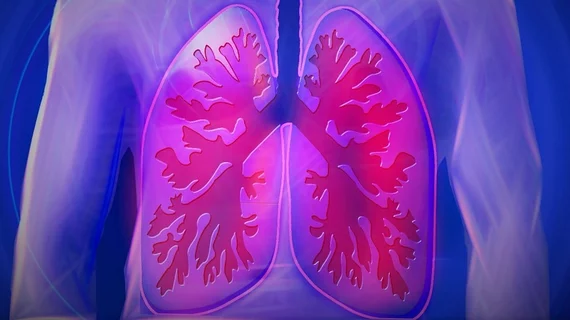Consulting a clinical decision support (CDS) tool when evaluating pulmonary embolism via CT angiography improves diagnostic yield and may reduce unnecessary exams, according to a recent study.
Researchers from Hofstra University and Northwell Health in New York tested a support tool designed to reduce CT pulmonary angiography (CTPA) orders which, in turn, was expected to increase the number of patients who received a definitive diagnosis, known as diagnostic yield. After implementation, the CDS tool did just that, bumping yield up by nearly 40%, paving a way for more efficient imaging.
“Although these tools have been around for more than a decade, they are not commonly used…,” Safiya Richardson, MD, and colleagues wrote Dec. 30 in the Journal of the American College of Radiology. However, she went on to note, increasing usage of such aides would lead to “fewer instances of radiation induced malignancy, contrast-induced nephropathy and the costly follow-up of incidental findings.”
The use of CTPA has quadrupled over the past 10 years, and this uptick has been connected to decreasing diagnostic yields and concerns about the dangers of unwarranted testing. CDS, at its core, is designed to address these issues, and has been shown to improve CTPA yield by up to 98%. Despite this, adoption remains low and up to 96% of support is overridden, Richardson et al. wrote.
For the current study, the team retrospectively looked at more than 7,300 CTPA exams ordered between two emergency departments from August 2015 to September 2018. Clinicians used the tool in 35% of cases and bypassed it in 65% of situations.
Diagnostic yield was 38% higher for CTPA exams when a clinician utilized the CDS tool, after controlling for selection bias. Attending physicians achieved the highest yield increase (56.5%), followed by residents (38.7%) and physician assistants (16.7%).
After controlling for selection bias, the diagnostic testing yield was nearly 12% when using CDS, versus 8.7% when it wasn’t consulted.
What’s more, Richardson and co-authors believe more than 1,400 CTPA scans could have been avoided if each test had been ordered using the CDS tool.
Richardson et al. found Asian patients and older groups were less likely to have their exam ordered using the support tool. They were unable to understand why, but suggested further research is needed to address the findings.
Overall, the researchers called on clinicians to shift their thinking when evaluating patients for pulmonary embolism.
“We are aware that in many cases clinicians dismiss CDS tools similar to this one with good reason; however, the balance has shifted too far toward dismissal,” they wrote. “Further research is needed to discover successful strategies to increase provider use of these important tools.”

